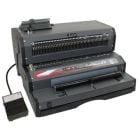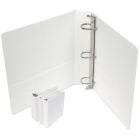Putting Together a Modeling Portfolio
The Planning Stage:
The first thing you will want to carefully consider is what type of modeling you intend to do, and more to the point, what type you are best suited for. Naturally, you will want to lean heavily on your main category when you are putting your photos together. This is where the reality of your capabilities starts to come in. For instance, if you are not quite tall enough for runway/high fashion modeling, you won't want to go to the trouble of including these types of images in your portfolio. In order to give yourself the best possible chance of getting work and giving prospective employers and/or agents the truest sense of your abilities stick to whatever it is you consider your strengths to be.
When you are getting ideas together for shoots, it never hurts to take a look around at the work that others have done. You don't want to copy exactly what you have seen in magazines, etc., but you can use them for a starting point. Find and follow working models whose work you admire and who you feel you might be able to emulate in some way. Again, don't "plagiarize," but show this work to your photographer and the two of you can work together to find suitable setups in which to conduct your shoots.
As far as finding a photographer, if you have an agent, he or she should have a list of tried and true professionals whom they trust to do a great job. If you are unrepresented at this point, you can still use the same photographers, but you will have to do some asking around within the community to get some names and numbers.
Working With Your Photographer:
If you have found a real pro, he or she will have plenty of ideas about how to best represent your abilities. If possible, you two should have a meeting before your shoot to discuss what your goals are, to show him or her any shots you've done previously that you liked, and to figure out times, dates, and locations.
Before the shoot, check and double check that you have everything that you need (wardrobe, etc.), and, if at all possible, make sure to get your hair and makeup done by a professional. Depending on your budget, it might be worth it to have them on hand during your shoot, though if you don't have representation this will be rather costly.
After The Shoot:
Sit down with some trusted people (within the industry if possible) and decide what shots to put in your book. Be sure to include a variety of poses, wardrobe, and locations, and at least one of each of the following: head shot, full body shot, and 3/4 body shot.
Binding it:
A lot of models simply choose to purchase a portfolio case from an office supply store, and that is fine. There are lots of other options, though, and you should take a good look online or go to your local print and copy shop to check out other binding options. Twin loop wire and perfect bound hardcover both create a look that is a little more visually appealing, and for do-it-yourselfers, some of the machines that do this binding are fairly inexpensive.








